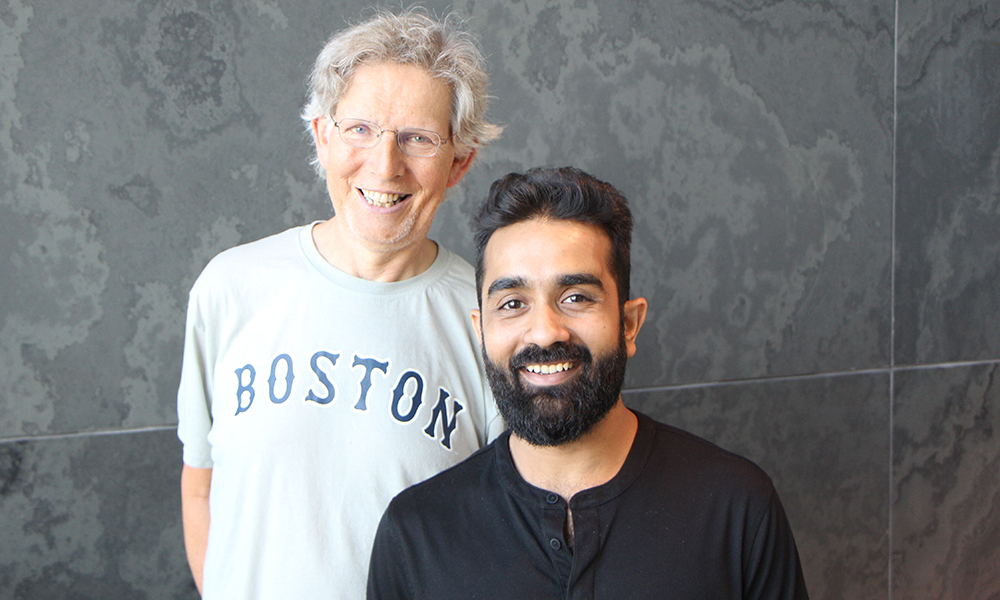Researchers from the Murray Lab, led by Biological and Biomedical Sciences (BBS) graduate student Piyush Nanda, have recently published a paper in the journal Current Biology on a computational model that can predict the size of yeast clusters by considering the physical links that connect a mother cell and her daughter. The project began as a result of a conversation between Andrew Murray and his friend, Boris Shraiman, a physicist at the University of California, Santa Barbara, over sushi on a Southern California summer evening. Shraiman asked what physical features set the size of multicellular yeast clusters that the Murray lab had evolved.
Normally, when yeast cells divide, they separate and exist as single cells. Selecting yeast for faster settling in a tube or for sharing nutrients locally leads to forming multicellular clusters—yeast cells that remain physically attached after cell division. The clusters of yeast cells likely resemble the first multicellular conglomerations that eventually gave rise to multicellular organisms. Studying yeast clusters could shed light on how this evolutionary transition occurred.
The question of what sets the size of multicellular yeast clusters lay unanswered until the Murray lab needed to find a computational project for Nanda to perform when the pandemic left him stuck in India as he was starting graduate school. His virtual rotation was to build a model for yeast the growth and division of yeast clusters.
The model uses only three parameters–the rate of cell multiplication, the rate at which links that connect two cells break, and the “kissing number”, or the maximum number of cells that can be linked to a single cell. Nanda says this surprisingly simple model explains the distribution of yeast cluster sizes.
“The approach we took was to build five different classes of models, and each of those models produced a characteristic distribution of sizes,” Nanda explains. “And then we developed an experimental method for measuring cluster sizes. The clusters matched a very specific type of model.”
The model predicted the maximum size of clusters and the distribution of sizes, but Nanda needed to validate it against experimental data with live yeast. Because yeast cells scatter light, counting the cells in a three-dimensional cluster is challenging so Nanda used a method where he flattens the cluster into a single layer and then uses image segmentation to count the cells.
Nanda found that the model that best predicted the distribution of cluster sizes was a simple one, using just the three parameters he had defined.
“The link between two cells has a higher chance of getting degraded as it gets older, and that along with the kissing number, is something that very neatly describes the size of clusters in yeast,” Nanda says. “So, you don’t need the exact mechanics to predict the maximum number of cells per cluster. Just by using three simple parameters, each one directly tied to genes and their functions, is enough to determine the size of the cluster.”
He adds that follow-up research could investigate how the presence of different cell types changes the model.
Nanda expressed gratitude toward his co-authors Julien Barrere and Thomas LaBar, who worked with him via Zoom during the early stages of the project. He also thanked staff at Harvard’s Center for Biological Imaging, including Doug Richardson and Zach Niziolik for their help imaging the yeast clusters.


